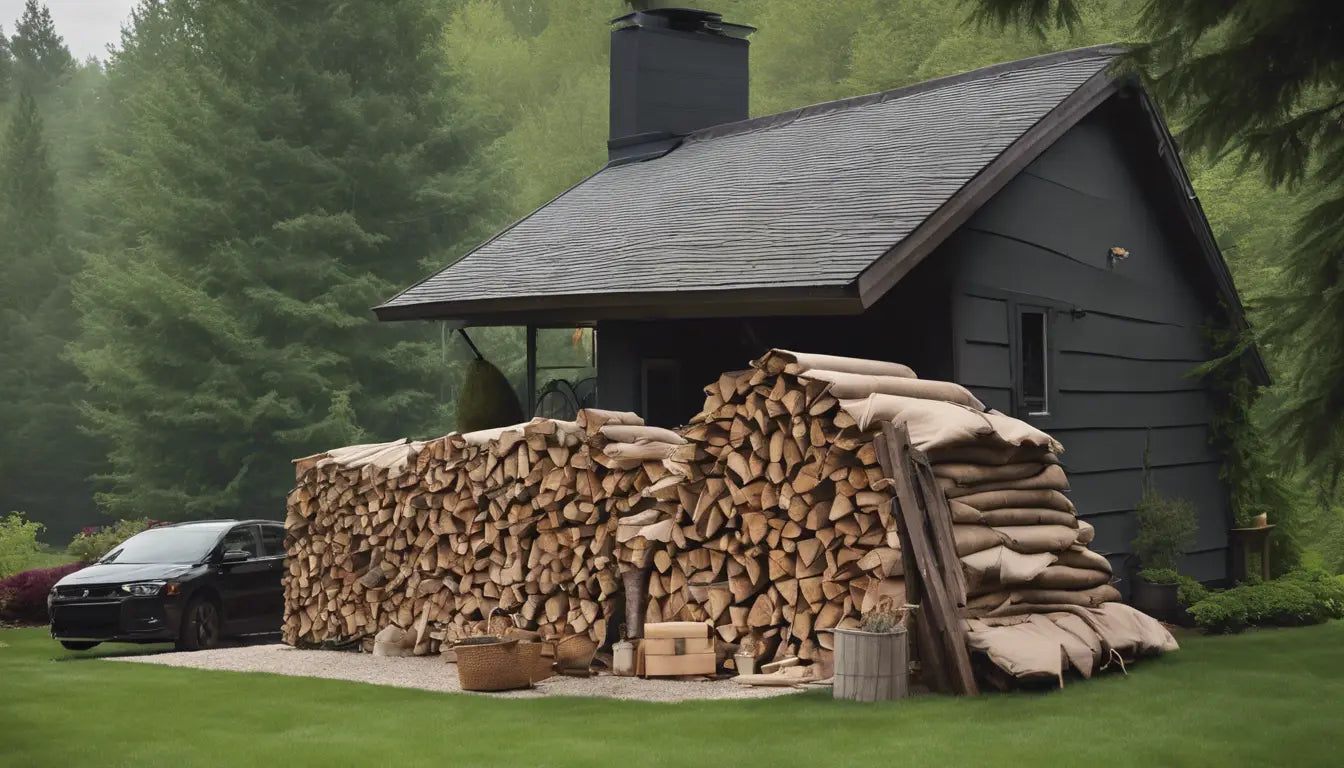Everyone loves the crackling warmth of a fireplace or stove, but maintaining the safety of your stored wood is not a matter to be taken lightly. It's not just about keeping your wood dry and ready for burning but also about avoiding the potential risks of pests and unclean burns. This article will provide some valuable information on understanding wood pests and risks, preventing pest infestations, and ensuring clean burns. So, let's get started then, shall we?
Understanding Wood Pests and Risks
What are Wood Pests?
Wood pests are insects that feed on and destroy wood, turning your beautifully stacked woodpile into a hollow, crumbling mess. The most common culprits are termites, beetles, and ants. These tiny destroyers can cause significant damage, often without you even noticing until it's too late.
Risks of Wood Pests
Wood pests pose a substantial risk to the structural integrity of the wood itself. Over time, they can degrade the wood's quality, making it less effective as a fuel source. But the risk isn't limited to your firewood. These pests can spread to other areas of your property, leading to costly repairs. Furthermore, wood pests can pose health risks as well, such as allergies and respiratory issues due to the dust and debris they produce.
Signs of Wood Pest Infestation
If you notice small, round holes, tunnels, or a pile of sawdust near your woodpile, you might have a wood pest problem. Other signs can include the presence of live insects, larvae, or even unusual sounds coming from the pile. It's essential to take action at the first sign to prevent further damage.
Preventing Wood Pest Infestation
Proper Wood Storage
The first step in preventing pests is proper wood storage. Choose a location away from the main house to prevent pests from easily moving indoors. Elevate the woodpile to prevent direct contact with the ground where pests commonly live. It's also wise to use a cover to protect the wood from rain and moisture, which can attract pests.
Regular Inspection and Maintenance
Keep a close eye on your woodpile. Regularly inspect it for signs of pests or damage. If you spot any signs of infestation, remove the affected wood immediately and treat the remaining woodpile with appropriate pesticides or insecticides.
Stacking Techniques
How you stack your wood can also play a significant role in pest prevention. A proper stacking method allows for airflow and drying, discouraging pests. Avoid creating overcrowded and tight spaces between logs, and periodically rotate your woodpile to prevent moisture buildup and pests.
Natural Pest Repellents
Natural repellents like cedar, eucalyptus, or lavender can deter pests. Consider planting some of these around your woodpile or applying natural oils or sprays. Not only does it keep pests at bay, but it also adds a nice aroma to your woodpile!
Ensuring Clean Burns
Importance of Clean Burning
Unclean burns can have significant environmental impacts, releasing more particulates and pollutants into the air. Inhaling smoke from unclean burns can also pose health risks, including respiratory issues. Additionally, unclean burns can reduce the efficiency of heating appliances, leading to higher fuel consumption.
Tips for Clean Burning
To ensure clean burns, it's crucial to season your wood properly before burning. Use dry, well-seasoned wood like kiln-dried or hardwood ash logs with low moisture content. Avoid burning treated or painted wood, which can release toxic fumes.
Proper Wood Burning Techniques
Maintaining a clean and well-maintained fireplace or wood stove is key to clean burning. Build a small, hot fire to ensure complete combustion, and avoid smoldering or slow-burning fires, which can produce more smoke and pollutants.
Regular Chimney Cleaning
A clean chimney is essential for proper ventilation and efficient burning. It's a good idea to hire a professional chimney sweep for an annual cleaning. You can also use chimney cleaning logs or products for regular maintenance.
Conclusion
In conclusion, the safety of your stored wood is paramount, not just for efficient burning but also for preventing potential pest infestations and health risks. By implementing these tips and taking regular preventive measures, you can maintain a safe woodpile and enjoy the benefits of clean, safe burning. Remember, an ounce of prevention is worth a pound of cure, or in this case, a cord of wood! So why not start today and make your wood burning experience safer and more enjoyable? After all, who doesn't love a cosy, crackling fire without any unwelcome guests or unwanted smoke?

